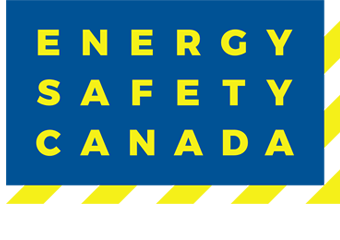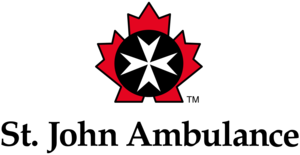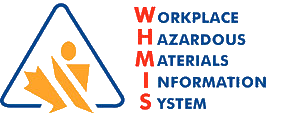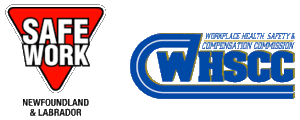WHSCC Confined Space Entry
This safety course is offered on a regular basis at our Safety Training facility in Mount Pearl, Newfoundland
TO REGISTER FOR THIS COURSE, A CANDIDATE NEEDS TO PROVIDE
A valid email address.
Introduction
Confined Space Entry Training is necessary to prevent injuries, fatalities and property damage. This is achieved by educating people on Confined Space hazards and the controls needs to eliminate or mitigate the risk of these hazards in order to perform work as safe as possible while inside a Confined Space. This training will provide people with an understanding of legislative requirements, provide students with an understanding of Health and Safety hazards involved with Confined Space work and provide students with a foundation of knowledge to effectively control these hazards through the use of Engineering, Administrative and PPE Controls.
Course Information
Duration: 2 day course
Components: Theory & Practical
Course Outline
Chapter 1: Identifying Confined Spaces
• Introduction
• Objectives
• Definition of Confined Spaces
• Confined Space Characteristics
• Exercise 1
• Training
• Review
Chapter 2: Roles and Responsibilities of Workplace Parties
• Introduction
• Objectives
• Role and Responsibilities of Employer
• Role and Responsibilities of Supervisor
• Role and Responsibilities of Worker
• Duties of Occupational Health and Safety Committee
• Worker’s Rights
• Review
Chapter 3: Confined Space Entry Legislation
• Introduction
• Objectives
• Confined Space Entry Legislation
• Emergency Plan Risk Assessment
• CSA Standard Z1006
• Review
Chapter 4: Confined Space Entry Program
• Introduction
• Objective
• Confined Space Assessment Responsibility
• Confined Space Assessment Requirements
• Hazard Identification Process
• Evaluating the Risk
• Controlling Hazards
• Confined Space Program
• Review
Chapter 5: Atmospheric Hazards & Controls
• Introduction
• Objectives
• Atmospheric Hazards
• Exercise 2
• Exercise 3
• Gas Detection Sampling and Strategies
• Gas Testing Equipment
• Order of Testing
• Testing Initial Conditions
• Atmospheric Testing
• Proper Test Procedures
• Qualification of Testers
• Where to Test
• Exercise 4
• Making Atmosphere Safe (Engineering Controls)
• Making Atmosphere Safe (Administrative Controls)
• Preventing Fire and Explosion
• Review
Chapter 6: Health & Safety Hazards
• Introduction
• Objectives
• Health and Safety Hazards
• Isolation Controls
• Controlling Temperature Extremes
• Controlling Noise
• Controls to Prevent Electrical Shock
• Adequate Lighting
• Controlling Slips, Trips and Falls
• Preventing Cave-Ins
• Story
• Review
Chapter 7: Personal Protective Equipment
• Introduction
• Objectives
• Personal Protective Equipment for Confined Space
• Respirators
• Exercise 5
• Respirators
• Review
Chapter 8: Confined Space Roles & Responsibilities
• Introduction
• Objectives
• Confined Space Entry Team
• Roles and Responsibilities of the Entrant
• Roles and Responsibilities of the Attendant
• Roles and Responsibilities of the Gas Detector
• Roles and Responsibilities of Rescue Team
• Roles and Responsibilities of CSE Supervisor
• Additional Training
• Review
Chapter 9: Confined Space Entry Permit
• Introduction
• Objectives
• Purpose of Confined Space Entry Permit
• Required Information
• Case Studies
• Review
Chapter 10: Confined Space Entry Rescue
• Introduction
• Objectives
• Importance of Emergency Rescue Plan
• Types of Rescues
• Roles and Responsibilities of Rescue Plan
• Training Requirements for Rescue Personnel
• First Aid Requirements
• Review
Chapter 11: Accident/Incident Reporting
• Introduction
• Objectives
• Accident/Incident Reporting- Employer
• Accident/Incident Reporting- Commission
• Accident/Incident Reporting- OH&S Division
• Accident/Incident Reporting- Investigation Procedure
• Review
Chapter 12: Practical (One of the below topics are assigned to groups of 4-7 people)
• Retrieval of a tool left in a Mud tank
• Inspection on a Crude Oil Cargo Tank
• Replacement of valve in a Manhole
• Applying new coating to a vessel
Exam
Practical
Practical portion to include Bump Testing of gas monitors, inspection and use of air supplying and air purifying breathing apparatuses, as well as pre-entry setup of ventilation systems. A complete hazard/risk assessment of confined space will be conducted using a scenario supplied to students. Isolations will be applied and all personal protective equipment will be used that is needed to complete the assigned task and finally, entry will be made incorporating all the different roles of a Confined Space Entry program. Students will have the opportunity to use all procedures and equipment that are covered in theory portion.




